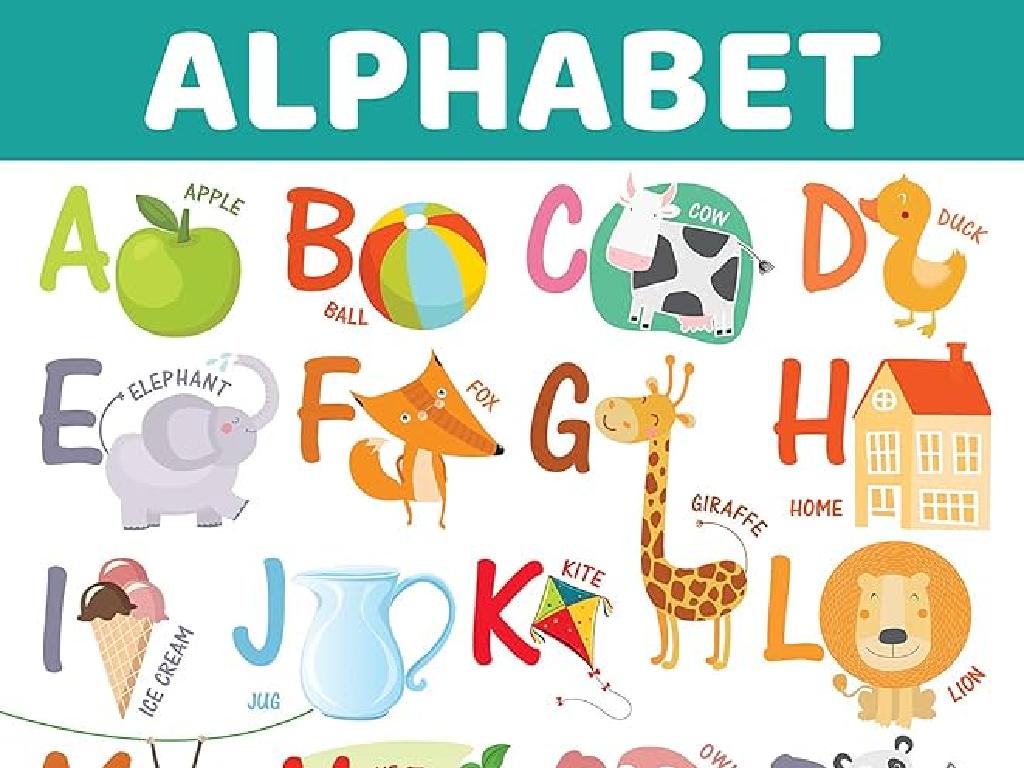Analyze Passages From Narrative Of The Life Of Frederick Douglass: Part 1
Subject: Language arts
Grade: Eighth grade
Topic: Nonfiction Book Study
Please LOG IN to download the presentation. Access is available to registered users only.
View More Content
Exploring Nonfiction with Frederick Douglass
– Meet Frederick Douglass
– An escaped slave, self-taught writer, and orator.
– His ‘Narrative’ overview
– A firsthand account of the life of an American slave.
– Grasping nonfiction
– Nonfiction presents factual information.
– Why nonfiction matters
– It informs, educates, and shapes our view of reality.
|
This slide introduces students to Frederick Douglass and sets the stage for a deeper dive into his autobiography, ‘Narrative of the Life of Frederick Douglass.’ Begin by discussing Douglass’s background as an escaped slave and his impact as a writer and orator. Provide a brief overview of the ‘Narrative,’ emphasizing its significance as a primary source document. Explain the genre of nonfiction, highlighting its role in providing factual, informative content. Discuss the importance of nonfiction in understanding and interpreting real-world events and experiences. Encourage students to reflect on how nonfiction can influence their perception of history and current events.
Understanding Nonfiction Texts
– Define nonfiction literature
– Nonfiction is factual writing based on real events and people.
– Key characteristics of nonfiction
– It includes accuracy, factual information, and a structured layout.
– Contrast nonfiction with fiction
– Nonfiction presents reality, while fiction is imagined.
– Relevance to ‘Narrative of the Life’
– Understanding these concepts helps analyze Frederick Douglass’s narrative.
|
This slide introduces students to the concept of nonfiction and its importance in understanding historical narratives like ‘Narrative of the Life of Frederick Douglass.’ Begin by defining nonfiction as literature based on facts, real events, and real people, distinguishing it from fiction, which is derived from imagination. Highlight the characteristics of nonfiction, such as accuracy of facts, presence of structured information, and an organized layout that often includes elements like indexes and glossaries. Discuss how nonfiction aims to inform or persuade, while fiction’s primary goal is to entertain. Emphasize the significance of recognizing these differences when analyzing nonfiction works, particularly autobiographical narratives that provide personal perspectives on historical events. Encourage students to apply these concepts when reading and discussing ‘Narrative of the Life of Frederick Douglass,’ focusing on how Douglass uses his personal story to convey broader truths about slavery and freedom.
Frederick Douglass: The Author
– Douglass’s early life and escape
– Born into slavery, self-educated, escaped at 20
– His impact on abolition
– A leading voice against slavery, advised Lincoln
– Writings: A voice for freedom
– Authored powerful autobiographies and speeches
– Legacy in civil rights
– His work laid groundwork for future civil rights movements
|
Frederick Douglass was born into slavery and taught himself to read and write. Escaping at the age of 20, he became a prominent abolitionist leader, influencing many with his powerful oratory and incisive antislavery writings. He advised President Abraham Lincoln and was instrumental in changing the views of many Americans about slavery and equal rights. Douglass’s autobiographies, including ‘Narrative of the Life of Frederick Douglass,’ are significant as they provide a first-hand account of the horrors of slavery and his journey to freedom. His legacy continues to inspire the fight for civil rights. Encourage students to reflect on the importance of Douglass’s work in the context of American history and the ongoing struggle for equality.
Exploring ‘Narrative of the Life of Frederick Douglass’
– Understanding the context
– Set in 19th century America, explores the harsh realities of slavery
– Identifying key themes
– Themes of freedom, human rights, and the power of literacy
– Uncovering Douglass’s purpose
– To shed light on the injustices of slavery and promote abolition
– Reflecting on the impact
– Consider how Douglass’s work influenced anti-slavery movements
|
This slide aims to delve into Frederick Douglass’s autobiography, providing students with a comprehensive understanding of the context, themes, and purpose behind the work. Students should recognize the setting of 19th century America and how it shapes the narrative. Discuss the major themes such as the quest for freedom, the importance of human rights, and how literacy serves as a tool for empowerment. Highlight Douglass’s intention to expose the cruelty of slavery and his efforts to advocate for abolition. Encourage students to reflect on the historical impact of the narrative and its relevance to contemporary discussions on race and justice. Engage the class in a discussion about the power of personal narrative in driving social change.
Analyzing ‘Narrative of the Life of Frederick Douglass’
– Read selected passages carefully
– Identify key elements & devices
– Look for metaphors, imagery, and repetition
– Discern the tone of the narrative
– Is it hopeful, angry, somber? How does it feel?
– Understand Douglass’s perspective
– Consider Douglass’s viewpoint as a former slave
|
This slide aims to guide students through a critical analysis of selected passages from ‘Narrative of the Life of Frederick Douglass.’ Students should start by reading the passages attentively, then move on to identifying literary devices such as metaphors, imagery, and repetition. These devices are crucial for understanding the deeper meanings and emotions conveyed in the text. Next, students should analyze the tone of the narrative, which can range from hopeful to somber, and reflect on how Frederick Douglass’s experiences as a former slave shape his perspective. Encourage students to think critically about the text and to consider the historical context in which it was written. This analysis will deepen their appreciation of the narrative and enhance their understanding of the period.
Exploring Frederick Douglass’s Narrative
– Discuss key passages in groups
– Share thoughts on Douglass’s experiences and their significance.
– Reflect on the text personally
– How did the narrative affect you? What emotions or thoughts arose?
– Connect text to history
– Relate Douglass’s life to the era of slavery in America.
– Understand the impact of Douglass’s words
|
This slide aims to engage students in a deeper analysis of ‘Narrative of the Life of Frederick Douglass.’ Begin with a group discussion to explore the impact of selected passages, encouraging students to consider how Douglass’s experiences resonate with them and with the broader historical context of slavery in America. Personal reflections should be encouraged to allow students to connect with the text on an individual level. Facilitate a conversation that helps students link the narrative to the historical events of the time, deepening their understanding of the text and its significance. The goal is to foster empathy and a personal connection to the material while also appreciating its historical importance.
Role-Play Activity: Exploring Frederick Douglass’s Narrative
– Students divide into groups
– Role-play scenes from the Narrative
– Each group acts out a selected passage
– Discuss feelings and challenges
– Share what emotions and difficulties characters might have faced
– Reflect on the historical context
– Understand the era’s social and cultural environment
|
This class activity is designed to deepen students’ understanding of ‘Narrative of the Life of Frederick Douglass’ through interactive role-play. By dividing the class into groups, each group will choose a scene from the Narrative to act out. This will help students engage with the text on a personal level and foster empathy for the characters. After the role-play, lead a discussion about the emotions and challenges the characters in the scenes might have experienced. Encourage students to consider the historical context and its impact on the characters’ lives. This activity will not only make the narrative more relatable but also enhance students’ critical thinking and discussion skills. Provide guidance on selecting appropriate scenes and facilitate a respectful and thoughtful discussion post-activity.
Reflection and Diary Entry Homework
– Reflect on today’s lesson
– Write a diary entry as Douglass
Imagine Douglass’s feelings and experiences for your entry.
– Create questions for Q&A session
Think of what intrigued you about Douglass’s life.
– Share reflections and questions
|
This slide aims to consolidate students’ understanding of Frederick Douglass’s experiences by personal reflection and creative writing. For homework, they should write a reflection on what they’ve learned, which will help them internalize the content. Additionally, they are tasked to write a diary entry from Douglass’s perspective, encouraging empathy and a deeper connection with the historical figure. Lastly, students should prepare questions for a Q&A session, promoting critical thinking and engagement with the text. In the next class, allocate time for students to share their work and discuss their questions, fostering a collaborative learning environment.






